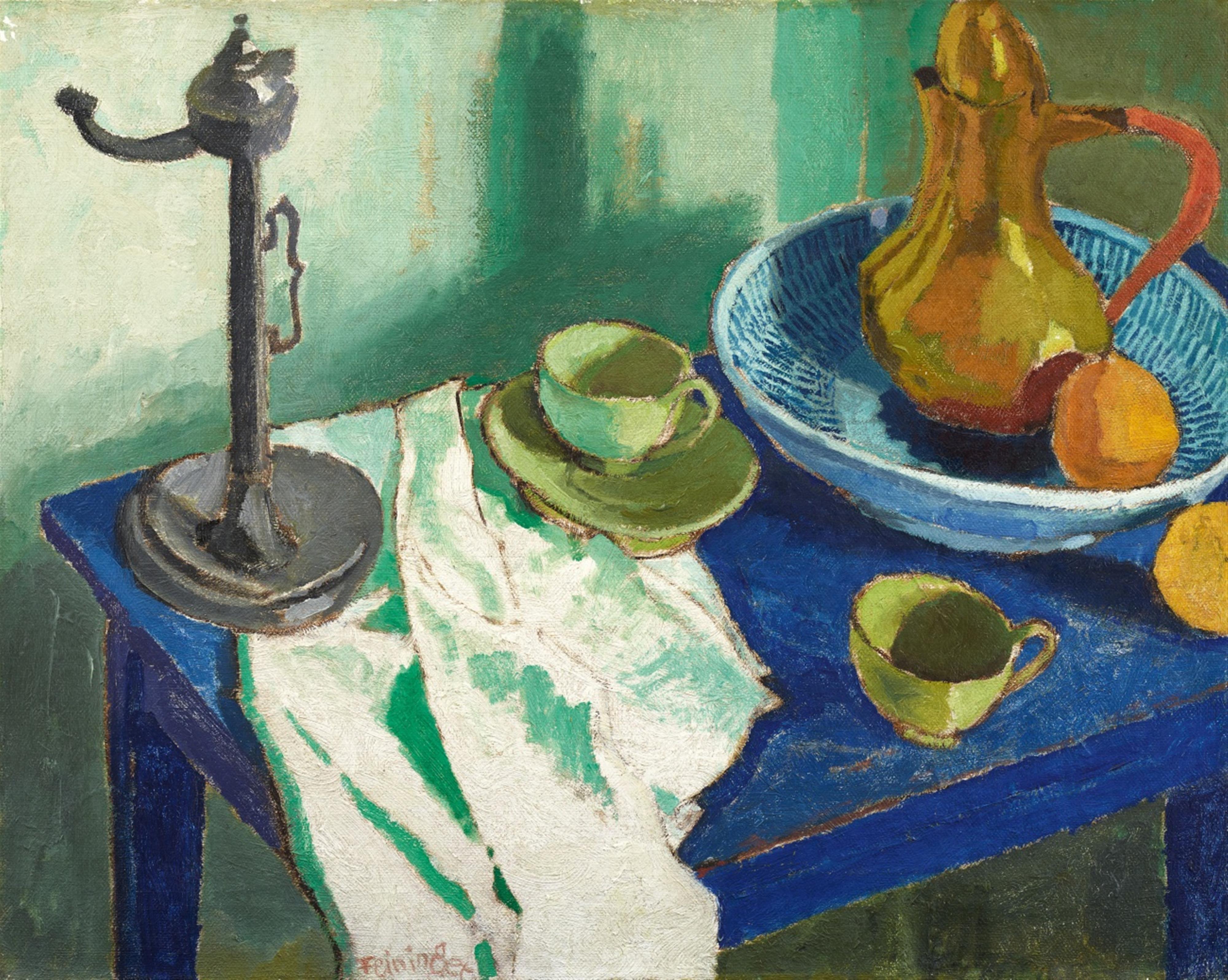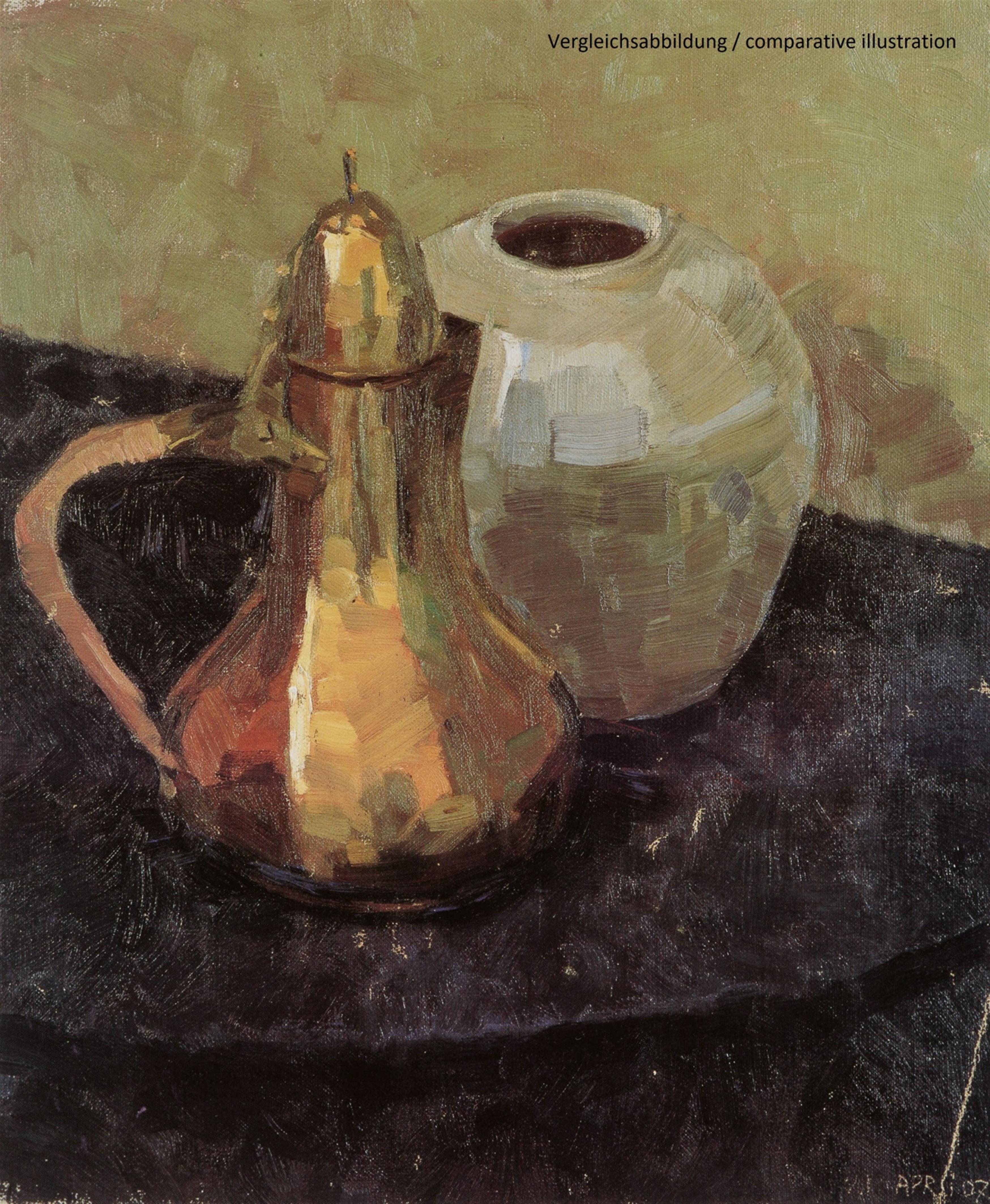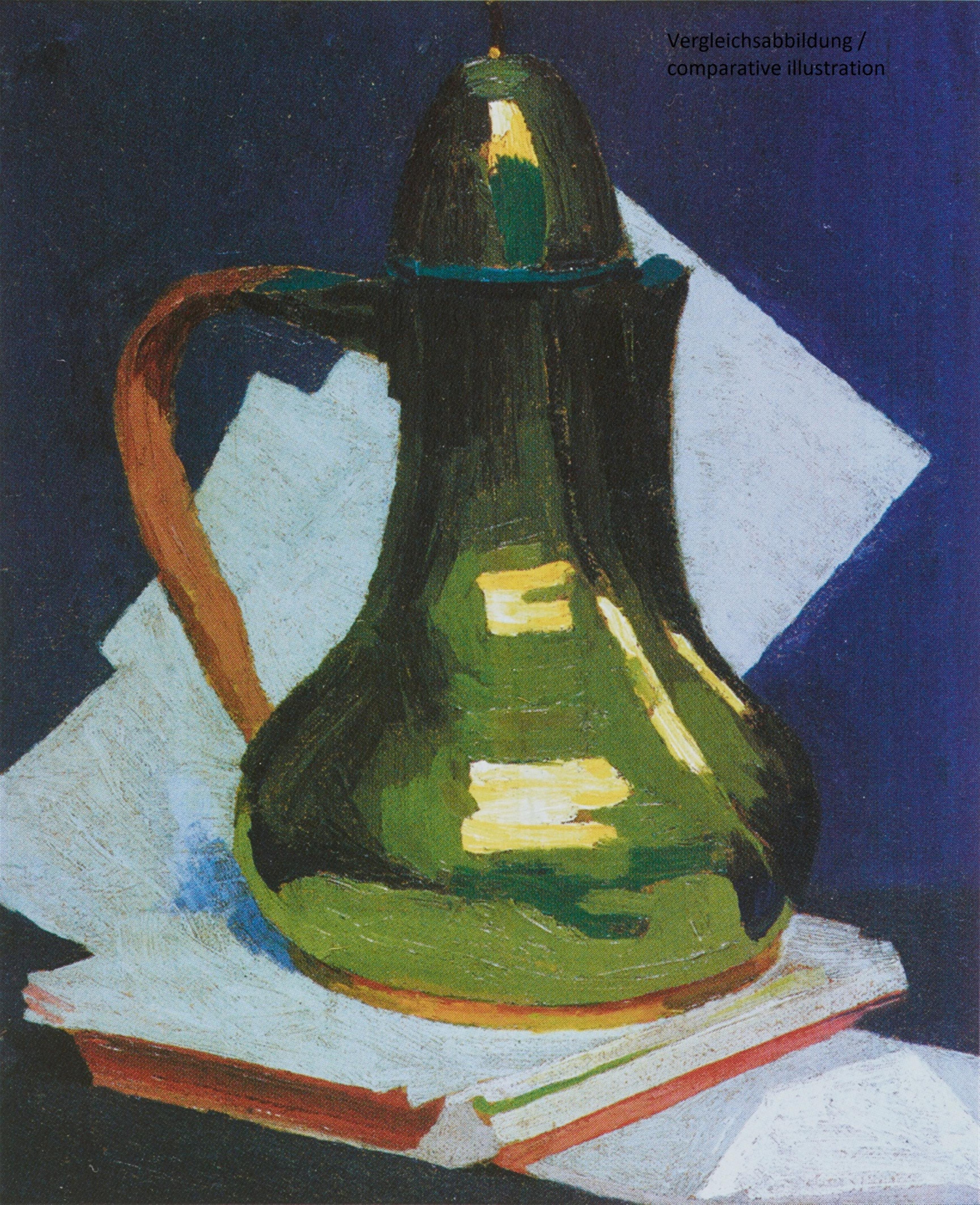Lyonel Feininger
Stilleben auf blauem Tisch
1911
Oil on canvas 55 x 75 cm Framed under glass. Signed 'Feininger' in brown lower margin. - Partially with fine craquelure.
The individual objects in this significant early still life by Lyonel Feininger are characterised like organisms: thus the oil lamp - with its distinctive form - seems to be filled with a life of its own, the placement of the cups is quite unorthodox and the oranges roll round the wide-bellied jug with a wooden handle in the ceramic bowl. The same metal jug with a wooden handle had already been a prominent motif in 1907 in “Stilleben mit grüner Kanne” - which was one of the first paintings Lyonel Feininger created in Paris and is now preserved in Berlin's Nationalgalerie - and in a still life with this same jug and a light-green ceramic vase (see comparative illustrations).
In their shifting downward views towards and on to the arrangement on the table, the perspectives provide our still life with a sense of movement. The objects seem to slide towards the viewer - the table, down and away. The immediacy of the scenery is also enhanced through its extending beyond the edges of the picture. A gentle green moderates the intense complementary contrast of blue and orange and underscores the gleam of the tin and brass. Mediterranean in the selection of forms, the colours also seem reminiscent of “le Midi”: the paintings of Cézanne and Matisse come to mind.
With his caricatures, Feininger had already participated in exhibitions in 1904. As a caricaturist he developed comic strips and characters for various magazines: these included the “woman with red hair” or the “man with top hat”, which he subsequently also established as fixed types in his paintings. His eye for the bizarre and his sense of humour would continue to run through his work: “The birth of German modernism out of the spirit of caricature - the decisive protagonists for this thesis are Kubin, Klee, Grosz and Feininger. Formally, caricature offers a carte blanche for all sorts of deviations from the rule. Exaggeration, distortion and deformation made it a training ground for modern art as did its obsession with bizarre mixtures of forms. In terms of content, this sort of fantasia of forms corresponds to caricature's predilection for joking, satire, irony and for the incisive insightfulness of the Enlightenment as well as for every conceivable recess of the human psyche […]." (Peter-Klaus Schuster, Prisma-Ismus, in: exhib. cat. Feininger - Von Gelmeroda nach Manhattan, Berlin/Munich 1999, p. 239).
Various stays in Paris familiarised the painter more closely with the works of the French avant-garde. In the year our still life was created, 1911, Feininger exhibited a number of works at the Parisian mega-event of the “Société des Indépendants”, which presented its audiences with 6,800 works by artists including Kandinsky, Lehmbruck, Léger and Delaunay. The paintings of the Cubists Metzinger and Gleizes attracted a great deal of attention. Feininger's encounter with Cubism also changed his concept of nature: Cubist and prismaist structures found their way into his painting. A retrospective look back at this still life with a jug painted four years prior to that reveals the innovations and the extraordinary modernity of “Stilleben auf blauem Tisch”, which has been in private hands for many years.
Catalogue Raisonné
Hess 62
Certificate
We would like to thank Ulrich Luckhardt, Ingelheim, for additional information on the work.
Provenance
Private possession, London; Galerie Grosshennig, Düsseldorf (1965); formerly Collection Richard König, Duisburg; family possession, Rhineland, since
Exhibitions
Düsseldorf 1964/1965 (Galerie Grosshennig), Meisterwerke des 19. und 20. Jahrhunderts. Gemälde - Plastik - Aquarelle, p. 23 with colour illus.






